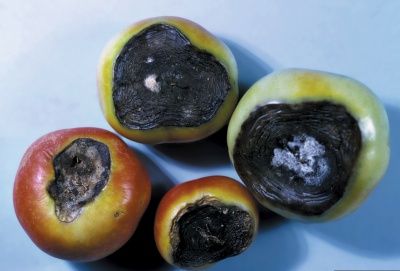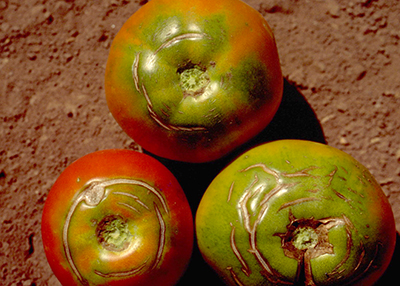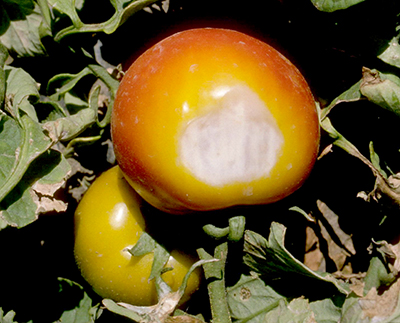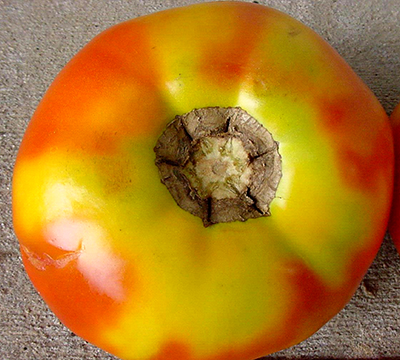Trouble in Tomatoland: When tomatoes are not attractive
Tomatoes with odd colors, blemishes and weird shapes are often caused by physiological or abiotic problems associated with sun, water and nutrients.

Tomatoes are ripening in gardens all over Michigan, but not all of the fruit is attractive. Some have odd colors, blemishes marking the fruit or weird shapes. What evil juju has befallen those precious ruby delights? These problems are often caused by physiological or abiotic problems, meaning they are not caused by insects or diseases. Causes could range from too much or not enough of something. Michigan State University Extension horticulture educators and Master Gardener hotline staff spend a good part of August and September giving answers to these kinds of questions. Tomatoes are very particular about sun, water and nutrients and when you cross them, they get even with odd fruit problems.
Water weirdness
When plants do not get enough water deeply or regularly, problems happen. Smart gardeners are already aware of blossom end rot that happens because there was not enough water to bring calcium into the plant. This causes the bottom of the fruit to turn black or brown, not develop and be flat. Uneven watering can also cause growth cracks. When plants have been dry and then there is a great deal of water either from the sky or from a hose, the fruit grows so fast that the skin splits. These can be radial cracks that look like a giant asterisk with the stem in the center or concentric cracks that are semicircular cracks surrounding the stem.

Blossom end rot on tomatoes. Photo by David B. Langston, University of Georgia, Bugwood.org.

Concentric growth cracks in tomato fruit. Photo by M.E. Bartolo, Bugwood.org
Sun trouble
When tomato fruit receive too much sun, they often develop a problem called sunscald. Both green and ripening fruit develop a yellow spot on the side facing the sun. The spot soon becomes white and blister-like. The tissue eventually gets soft, drops in and creates a depression. That area has been “cooked.” In humid weather, all manner of rots will appear in the whitened, soft area. This can happen if the plant develops a foliar disease like Septoria leaf spot and leaves fall off, leaving fruit to broil in the sun. It can also happen when plants are pruned and branches and leaves are removed and fruit gets more sun exposure than it can handle.

Sunscald on tomato fruit. Photo by Howard F. Schwartz, Colorado State University, Bugwood.org
Yellow shoulder happens to the area of the fruit directly around the stem called the shoulders. The yellowed area becomes tough and tasteless. High temperatures during ripening tend to accentuate this disorder. The shoulder doesn’t turn white like sunscald; it stays yellow. Lack of leaves on the plant can expose the fruit to more sunlight than it can use.

Yellow shoulder on tomato fruit. Photo by Paul Bachi, University of Kentucky Research and Education Center, Bugwood.org
Blotchy ripening causes ripe fruit to lack red pigment in the skin in scattered areas. Those areas may be firm and white, green or yellow. It can extend into the tomato’s interior. Low light intensity or not enough hours of direct sun can cause this, but it is more prevalent in plants grown in potassium-deficient soil. Other nutritional imbalances in the soil can contribute. This is why soilless potting mixes should not be used more than one season. They essentially “wear out.”
If tomatoes reign supreme in your vegetable paradise, get a soil test and adjust nutrients before the growing season begins. Purchase a soil test at: MSUSoilTest.com or call your local MSU Extension office and see if they have them for sale.



 Print
Print Email
Email

